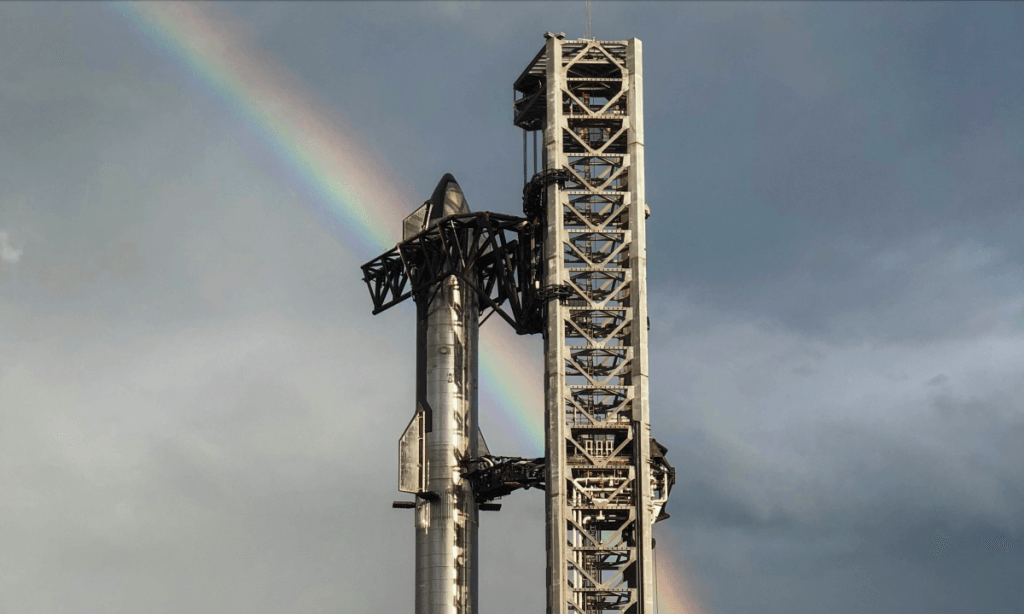It’s official: SpaceX will try to launch the first orbital test mission of its huge Starship vehicle on Monday (April 17).
SpaceX has been targeting Monday for the Starship flight for the past week or so. That plan was tentative, however, as the company still needed to secure a launch license from the U.S. Federal Aviation Administration (FAA).
It’s tentative no longer. At 5:50 p.m. EDT (2150 GMT) on Friday (April 14), the FAA announced the granting of the license, ending a review that lasted more than 500 days. Mere minutes later, SpaceX firmed up its launch plans.
“Targeting as soon as Monday, April 17 for the first flight test of a fully integrated Starship and Super Heavy rocket from Starbase in Texas,” the company tweeted (opens in new tab) at 5:57 p.m. EDT (2157 GMT) on Friday.
The 150-minute launch window opens Monday at 8 a.m. EDT (1200 GMT; 7 a.m. local Texas time). You can watch the liftoff live here at Space.com when the time comes, courtesy of SpaceX.
Related: How to watch SpaceX’s its 1st Starship orbital launch on April 17
More: How SpaceX’s 1st orbital Starship launch will work
Targeting as soon as Monday, April 17 for the first flight test of a fully integrated Starship and Super Heavy rocket from Starbase in Texas → https://t.co/bJFjLCiTbK pic.twitter.com/Ry25UuvknhApril 14, 2023
Starship consists of a giant first-stage booster called Super Heavy and a 165-foot-tall (50 meters) upper-stage spacecraft known as Starship. Both of these vehicles are designed to be fully reusable, and both are powered by SpaceX’s next-generation Raptor engine — 33 for Super Heavy and six for Starship.
As the above tweet notes, the upcoming test flight will lift off from Starbase, SpaceX’s facility in South Texas. It will involve a Super Heavy prototype called Booster 7 and the Ship 24 upper-stage variant.
If all goes according to plan, Booster 7 will splash down in the Gulf of Mexico about 20 miles (32 kilometers) off the Texas coast around eight minutes after liftoff. Ship 24, meanwhile, will keep flying, conducting a partial lap of Earth before coming down in the Pacific Ocean near Hawaii.
When Booster 7 and Ship 24 lift off, Starship will become the most powerful rocket ever to fly. The vehicle will generate about 16.5 million pounds of thrust at liftoff, according to SpaceX — nearly twice as much as the current record holder, NASA’s Space Launch System megarocket.
SpaceX has big plans for Starship. The company believes the giant vehicle, which stands 394 feet (120 meters) tall fully stacked, will make settlement of the moon and Mars economically feasible.
Mike Wall is the author of “Out There (opens in new tab)” (Grand Central Publishing, 2018; illustrated by Karl Tate), a book about the search for alien life. Follow him on Twitter @michaeldwall (opens in new tab). Follow us on Twitter @Spacedotcom (opens in new tab) or Facebook (opens in new tab).

